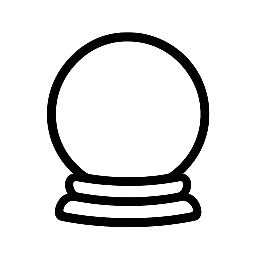Kabbalah’s Sacred Symbol: Unveiling the Mysteries of the Tree of Life
In the realm of Jewish mysticism, there exists a profound symbol that has captivated the imagination of spiritual seekers for centuries. The Tree of Life, also known as the Etz Chaim, is the cornerstone of Kabbalistic wisdom, representing the intricate web of connections between the divine, the universe, and humanity. This sacred symbol has been a subject of fascination and study, offering insights into the nature of reality, the human condition, and the path to spiritual enlightenment. In this article, we will delve into the mysteries of the Tree of Life, exploring its significance, structure, and the profound lessons it imparts.
Introduction to the Tree of Life
The Tree of Life is a diagrammatic representation of the Kabbalistic concept of the ten sephirot, or divine emanations, which emanate from the infinite and unknowable source of the universe, known as the Ein Sof. These sephirot are interconnected by a network of pathways, forming a complex web of relationships that underlies all of existence. The Tree of Life is often depicted as a vertical arrangement of circles or spheres, each representing a sephirah, with the highest sphere, Keter, symbolizing the divine crown, and the lowest sphere, Malkhut, representing the physical world.
The Structure of the Tree of Life
The Tree of Life consists of ten sephirot, each with its own unique characteristics and attributes. The sephirot are divided into three pillars: the pillar of severity, the pillar of mercy, and the pillar of balance. The pillars are interconnected by a series of pathways, known as the "tzimtzum," which represent the flow of divine energy between the sephirot.
- Keter: The divine crown, representing the infinite and unknowable source of the universe.
- Chokhmah: The sphere of wisdom, symbolizing the divine plan and the underlying order of the universe.
- Binah: The sphere of understanding, representing the divine feminine and the power of receptivity.
- Chesed: The sphere of mercy, embodying the divine attribute of loving-kindness.
- Gevurah: The sphere of severity, representing the divine attribute of discipline and judgment.
- Tiferet: The sphere of beauty, symbolizing the balance and harmony that arise from the interplay between mercy and severity.
- Netzach: The sphere of victory, representing the divine attribute of endurance and perseverance.
- Hod: The sphere of splendor, symbolizing the divine attribute of glory and majesty.
- Yesod: The sphere of foundation, representing the divine attribute of stability and grounding.
- Malkhut: The sphere of kingdom, symbolizing the physical world and the realm of human experience.
Lessons from the Tree of Life
The Tree of Life offers a wealth of insights into the nature of reality, the human condition, and the path to spiritual growth. Some of the key lessons that can be derived from this sacred symbol include:
- Interconnectedness: The Tree of Life illustrates the interconnectedness of all things, demonstrating that every aspect of existence is linked and interdependent.
- Balance and Harmony: The Tree of Life shows how balance and harmony arise from the interplay between opposing forces, such as mercy and severity, and how this balance is essential for spiritual growth and well-being.
- The Unity of All Things: The Tree of Life represents the unity of all things, revealing that the divine is present in every aspect of existence, from the highest spheres of consciousness to the physical world.
- The Path to Spiritual Growth: The Tree of Life offers a roadmap for spiritual growth, guiding the individual through the various sephirot and the attributes they represent, towards greater self-awareness, wisdom, and enlightenment.
Practical Applications of the Tree of Life
The Tree of Life is not merely a theoretical concept, but a practical tool for spiritual growth and self-transformation. By studying and meditating on the Tree of Life, individuals can:
- Deepen their understanding of themselves and the universe: The Tree of Life offers a profound understanding of the human condition and the nature of reality, allowing individuals to develop a deeper appreciation for the interconnectedness of all things.
- Cultivate spiritual awareness and intuition: The Tree of Life provides a framework for cultivating spiritual awareness and intuition, enabling individuals to tap into the divine wisdom that underlies all of existence.
- Develop a more balanced and harmonious life: The Tree of Life offers guidance on how to balance and harmonize the various aspects of one’s life, leading to greater well-being, happiness, and fulfillment.
Conclusion
The Tree of Life is a profound and complex symbol that has been a cornerstone of Kabbalistic wisdom for centuries. By exploring the structure and significance of this sacred symbol, individuals can gain a deeper understanding of the nature of reality, the human condition, and the path to spiritual growth. The Tree of Life offers a wealth of insights and practical applications, guiding individuals towards greater self-awareness, wisdom, and enlightenment. As we continue to unveil the mysteries of the Tree of Life, we may discover that this ancient symbol holds the keys to unlocking the secrets of the universe and our place within it.


Leave a Reply